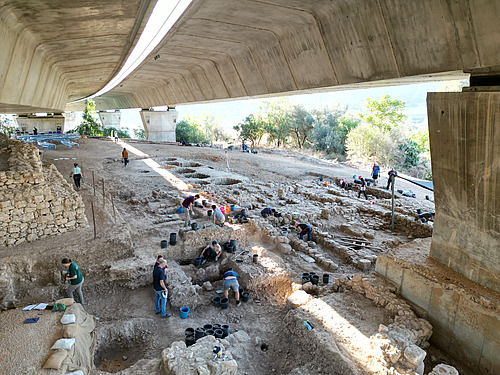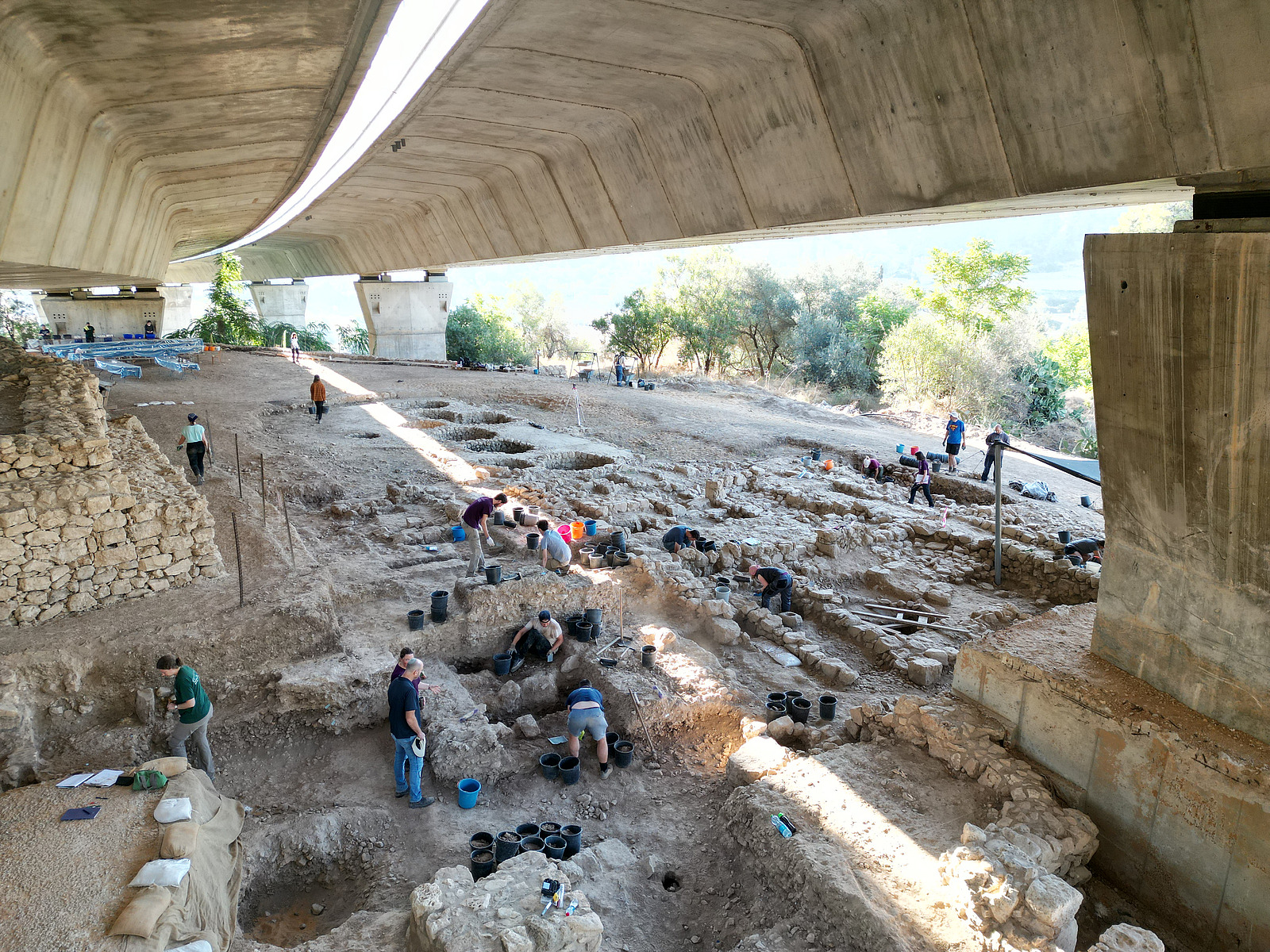Prof. Dr. Anselm C. Hagedorn and Dr. Florian Oepping from the Institute of Protestant Theology at Osnabrück University have been collaborating with Prof. Dr. Oded Lipschits and Dr. Shua Kisilevitz from the Sonia and Marco Nadler Institute of Archaeology at Tel Aviv University, Israel, since 2019. The international cooperation, in which Charles University in Prague and the University of Malta are also involved, is dedicated to the reconstruction of an Iron Age temple in Tel Moẓa near Jerusalem. The Ministry of Science and Culture of Lower Saxony, together with the Volkswagen Foundation, is now providing a total of around € 520,000 over three years for further research. Among other things, a three-dimensional model of the religious site is planned.
Twelve years ago, Shua Kisilevitz and other colleagues from the Israel Antiquities Authority were able to identify the finds from the rescue excavation as a temple dating from 1000 to 600 BC. It is located seven kilometers north of Jerusalem and was discovered during the construction of a new highway to Tel Aviv. In recent years, numerous Osnabrück students of Protestant theology as well as other international volunteers and students have been involved in the excavations and have been able to secure far-reaching historical results. "This temple complex is so important because it can give us a direct insight into the architecture and cult practices of the Iron Age. The literary evidence can thus be verified by the archaeological finds," says Dr. Anselm Hagedorn, Professor of Old Testament and Ancient Judaism at Osnabrück University.
Three individual projects are now to be implemented with the help of the new funding. The first involves micromorphological investigations - studies of structures visible under the microscope - in order to define the cultic and economic activities at the site during the Iron Age in more detail. Secondly, the results will be compared with the biblical accounts of temple construction. In particular, the texts will be examined for their specific traditions. The third sub-project deals with the question of how the excavation can be presented in the future. A 3D model and a virtual app will guide visitors through the excavation to allow them to experience the Iron Age site in its original dimensions. "It is particularly important to us that the reconstruction is scientifically sound and based on data and finds," explains Dr. Florian Oepping, currently a Minerva Foundation Postdoctoral Fellow at Tel Aviv University. The various sub-projects not only provide important results and preliminary work for the final publication of the excavation report of the temple complex, but also break new ground in the conservation of archaeological sites with 3D reconstruction.
The cooperation project between the universities of Osnabrück and Tel Aviv is part of the expansion of the fundamental partnership between the two universities and raises the international profile of Osnabrück University.
Further information for editorial offices:
Prof. Dr. Anselm C. Hagedorn Osnabrück University
Institute of Protestant Theology
anselm.hagedorn@uni-osnabrueck.de





